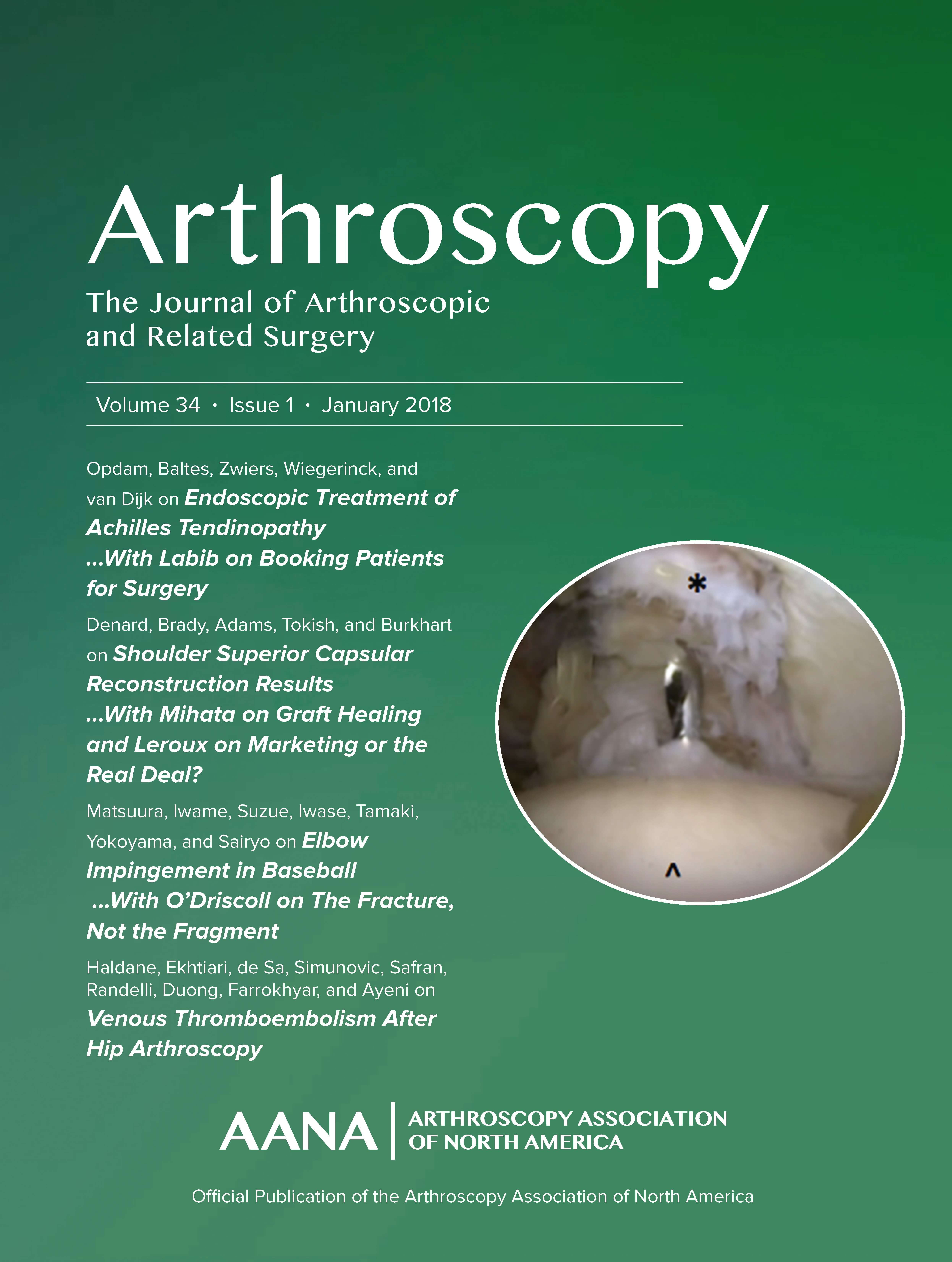
Labral repair superior to labral debridement for treatment of femoroacetabular impingement

Labral repair superior to labral debridement for treatment of femoroacetabular impingement
Arthroscopic labral repair versus selective labral debridement in female patients with femoroacetabular impingement: a prospective randomized study
Arthroscopy. 2013 Jan;29(1):46-53. doi: 10.1016/j.arthro.2012.07.011Did you know you're eligible to earn 0.5 CME credits for reading this report? Click Here
OE EXCLUSIVE
Dr. Aaron Krych discuss Arthroscopic labral repair versus selective labral debridement in female patients with femoroacetabular impingement.
Synopsis
36 patients (all female) were randomized to determine which treatment, labral repair or labral debridement, was more effective for femoroacetabular impingement. Patients received either labral repair or labral debridement, and were followed-up at a minimum of one year postoperatively. Results suggest that labral repair displayed superiority in improving clinical outcome and propioception of hip function compared to the debridement procedure. Patient subjective outcome was also superior in the labral repair group.
Was the allocation sequence adequately generated?
Was allocation adequately concealed?
Blinding Treatment Providers: Was knowledge of the allocated interventions adequately prevented?
Blinding Outcome Assessors: Was knowledge of the allocated interventions adequately prevented?
Blinding Patients: Was knowledge of the allocated interventions adequately prevented?
Was loss to follow-up (missing outcome data) infrequent?
Are reports of the study free of suggestion of selective outcome reporting?
Were outcomes objective, patient-important and assessed in a manner to limit bias (ie. duplicate assessors, Independent assessors)?
Was the sample size sufficiently large to assure a balance of prognosis and sufficiently large number of outcome events?
Was investigator expertise/experience with both treatment and control techniques likely the same (ie.were criteria for surgeon participation/expertise provided)?
Yes = 1
Uncertain = 0.5
Not Relevant = 0
No = 0
The Reporting Criteria Assessment evaluates the transparency with which authors report the methodological and trial characteristics of the trial within the publication. The assessment is divided into five categories which are presented below.
2/4
Randomization
3/4
Outcome Measurements
4/4
Inclusion / Exclusion
4/4
Therapy Description
4/4
Statistics
Detsky AS, Naylor CD, O'Rourke K, McGeer AJ, L'Abbé KA. J Clin Epidemiol. 1992;45:255-65
The Fragility Index is a tool that aids in the interpretation of significant findings, providing a measure of strength for a result. The Fragility Index represents the number of consecutive events that need to be added to a dichotomous outcome to make the finding no longer significant. A small number represents a weaker finding and a large number represents a stronger finding.
Why was this study needed now?
Femoroacetabular impingement arises through either a cam impingement or pincer impingement, which are characterized by an irregularly shaped femoral head/neck or positional problems of the acetabulum, respectively. A number of studies have reported outcomes associated with either labral debridement or labral repair, but there has yet to be a prospective randomized study to compare the two procedures.
What was the principal research question?
Which treatment of femoroacetabular impingement - labral debridement or repair - provided superior results in functional and/or subjective outcome when measured at least 1 year after surgery in female patients?
What were the important findings?
- HOS for activities of daily living were improved from 68.2 to 91.2 in the repair group and from 60.2 to 80.9 in the debridement group. Both these improvements were significant within-group differences, and the postoperative score was significantly greater for the repair group (p<0.05).
- Improvement in HOS-sports was from 47.5 preoperatively to 88.7 postoperatively in the repair group, and 40.6 to 76.3 in the debridement group. Improvement was significantly greater in the repair group (p<0.05).
- 76% of patients in both groups rated their hip function as "severely abnormal" preoperatively. Postoperatively, 72% (n=13) of repair patients reported "normal" function, 22% (4) "near normal", 6% (1) "abnormal" and none reported "severely abnormal" function. In contrast, 28% (5) of debridement patients experienced "normal" function, 50% (9) "nearly normal", 17% (3) "abnormal" and 6% (1) "severely abnormal". The postoperative ratings were significantly better in the repair group (p=0.046).
What should I remember most?
Patients who were treated with labral repair experienced significantly greater improvements in clinical outcome, and a larger percentage of patients had felt that their hip function had been returned to "normal" or "near normal" when compared to patients who received labral debridement.
How will this affect the care of my patients?
These findings favour the use of labral repair over debridement in the treatment of patients with femoroacetabular impingement. However further, larger-scale RCTs should be conducted before the evidence can be considered conclusive.
Learn about our AI Driven
High Impact Search Feature
Our AI driven High Impact metric calculates the impact an article will have by considering both the publishing journal and the content of the article itself. Built using the latest advances in natural language processing, OE High Impact predicts an article’s future number of citations better than impact factor alone.
Continue



 LOGIN
LOGIN

Join the Conversation
Please Login or Join to leave comments.